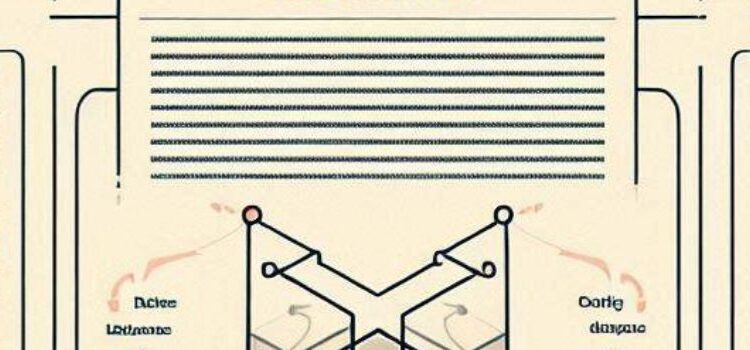Differences Between Discussion and Conclusions in Scientific Writing
In scientific writing, the structure of an academic article follows a well-defined format, within which the Discussion and Conclusions sections often generate questions among both novice and experienced authors. Confusion between these two sections can lead to unnecessary repetition or a lack of clarity regarding the results and their meaning. This article aims to clarify what each section entails, how they differ, and why both are essential for effective scientific communication.
What is the Discussion?
The discussion is the section where the author interprets the results in light of existing knowledge. Here, the findings are not merely described but are examined for their significance, compared with results from other studies, and potential reasons behind the findings are explored. Additionally, the discussion allows authors to acknowledge the study’s limitations and suggest future research directions.
In this part of the manuscript, authors should move beyond raw data or numbers to provide a critical and reflective analysis. The discussion primarily answers the question: What do my results mean? This is a key point that distinguishes a purely descriptive article from one that offers meaningful interpretation.
What are the Conclusions?
The conclusions, by contrast, serve as the formal closure of the article. Their function is to synthesize the main findings and highlight the most significant implications of the study, without delving into extensive discussion or repeating all results. Conclusions should be clear, concise, and answer the question: What can be asserted based on this study?
While the discussion may extend into broader explorations of ideas, conclusions need to distill reflections into concrete, useful, and actionable statements. They often include practical recommendations or proposals for applying the findings in specific contexts.
Key Differences Between Discussion and Conclusions
One essential difference lies in their focus. The discussion centers on the analytical process: it interprets, compares, and questions. The conclusions, on the other hand, focus on summarizing: they pinpoint the main contributions and their implications.
Another important difference is the depth of content. The discussion allows for broader analysis and typically occupies more space within the article. Conclusions, in contrast, are brief and to the point, aimed at delivering an effective closure.
Finally, while the discussion may include well-grounded speculation and raise new questions, the conclusions must rely solely on what has been demonstrated in the study.
Why Is It Necessary to Maintain Both Sections?
Although it may seem redundant, maintaining both sections is crucial to ensure clarity and rigor within the article. The discussion helps the reader understand the impact of the results within the broader context of the discipline, while the conclusions provide a final synthesis that reinforces the key messages.
Moreover, many academic journals explicitly require that these sections be kept separate, as they serve distinct purposes in scientific communication. Structural clarity enhances readability and improves the perceived quality of the article.
In summary, confusing or merging these sections can weaken the scientific message. Each section plays a unique and complementary role that, together, strengthens the academic narrative.
References
- Day, R. A., & Gastel, B. (2016). Cómo escribir y publicar trabajos científicos (7th ed.). Editorial Médica Panamericana.
- Peat, J., & Elliott, E. (2008). Scientific writing: Easy when you know how. BMJ Books.
- Swales, J. M., & Feak, C. B. (2012). Academic writing for graduate students: Essential tasks and skills (3rd ed.). University of Michigan Press.
Diferencias entre discusión y conclusiones en la escritura científica
En la escritura científica, la estructura del artículo académico sigue un esquema bien definido, dentro del cual las secciones de discusión y conclusiones suelen generar dudas tanto en autores noveles como en aquellos con experiencia. La confusión entre ambos apartados puede conducir a repeticiones innecesarias o a una presentación poco clara de los resultados y su significado. Este artículo tiene como objetivo clarificar qué es cada sección, cómo se diferencian y por qué ambas son fundamentales para una comunicación científica efectiva.
¿Qué es la discusión?
La discusión es el espacio en el que el autor interpreta sus resultados a la luz del conocimiento previo. Aquí no solo se describe lo encontrado, sino que se examina su relevancia, se comparan los hallazgos con los reportados en otros estudios y se explican las posibles razones detrás de los resultados obtenidos. Además, la discusión permite identificar limitaciones del estudio y sugerir futuras líneas de investigación.
En este apartado, el autor debe ir más allá de los números o datos crudos para ofrecer un análisis crítico y reflexivo. La discusión responde principalmente a la pregunta: ¿Qué significan mis resultados? Este es un punto clave que diferencia a un artículo descriptivo de uno verdaderamente interpretativo.
¿Qué son las conclusiones?
Las conclusiones, por otro lado, son el cierre formal del artículo. Su función es sintetizar los principales hallazgos y destacar las implicaciones más relevantes del estudio, pero sin entrar en discusiones extensas ni repetir todos los resultados. Las conclusiones deben ser claras, concisas y responder a la pregunta: ¿Qué se puede afirmar a partir de este estudio?
Mientras la discusión puede extenderse en la exploración de ideas, las conclusiones precisan aterrizar las reflexiones en mensajes concretos, útiles y aplicables. También suelen incluir recomendaciones prácticas o propuestas para la aplicación de los resultados en contextos específicos.
Diferencias clave entre discusión y conclusiones
Una diferencia esencial radica en el enfoque. La discusión se centra en el proceso analítico: interpreta, compara y cuestiona. Las conclusiones, en cambio, se enfocan en resumir: puntualizan las aportaciones principales y sus implicancias.
Otra diferencia importante es la profundidad. La discusión permite la amplitud del análisis y suele ocupar un espacio mayor en el artículo. Las conclusiones, por su parte, son breves y directas, buscando ofrecer un cierre efectivo.
Finalmente, la discusión puede incluir especulaciones fundamentadas y abrir nuevas preguntas, mientras que las conclusiones deben basarse exclusivamente en lo evidenciado en el estudio.
¿Por qué es necesario mantener ambas secciones?
Aunque pueda parecer redundante, mantener ambas secciones es fundamental para asegurar la claridad y el rigor del artículo. La discusión permite al lector comprender el impacto de los resultados en el marco más amplio de la disciplina, mientras que las conclusiones proporcionan una síntesis final que refuerza los mensajes clave.
Además, muchas revistas académicas exigen explícitamente que se mantengan estas secciones diferenciadas, pues responden a necesidades distintas de la comunicación científica. La claridad estructural facilita la lectura y mejora la calidad percibida del artículo. En síntesis, confundir o mezclar estos apartados puede diluir la fuerza del mensaje científico. Cada sección cumple un rol único y complementario que, en conjunto, fortalece la narrativa académica.




